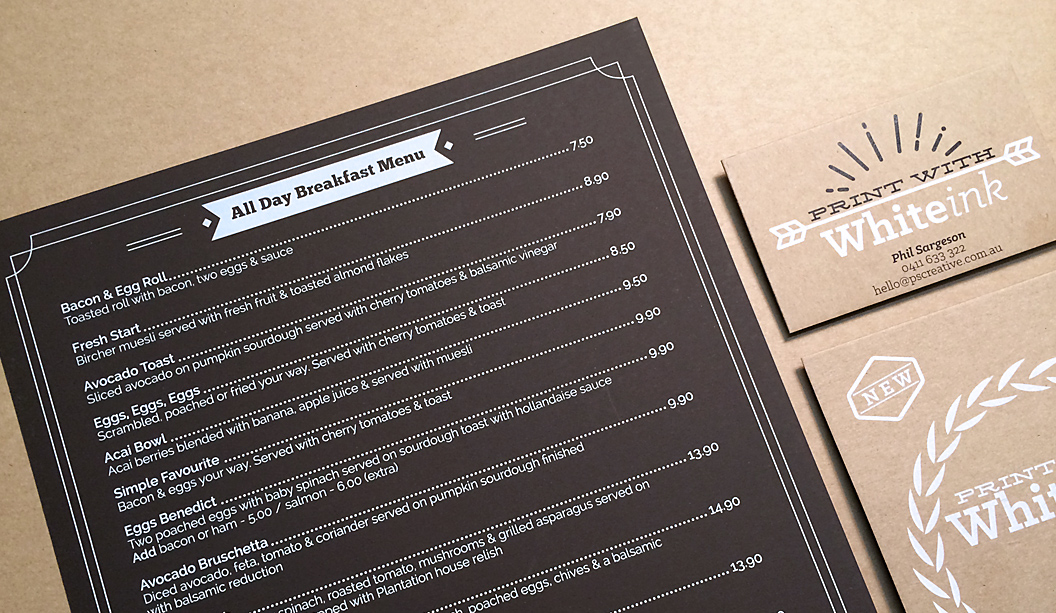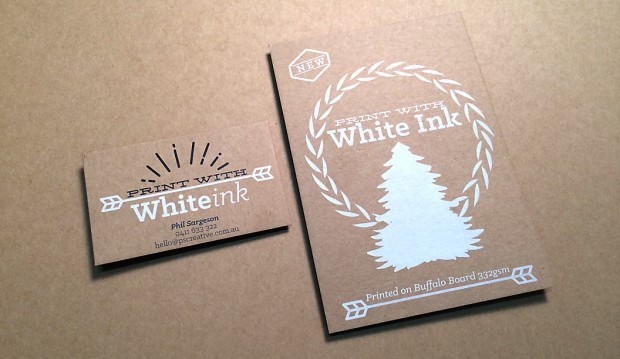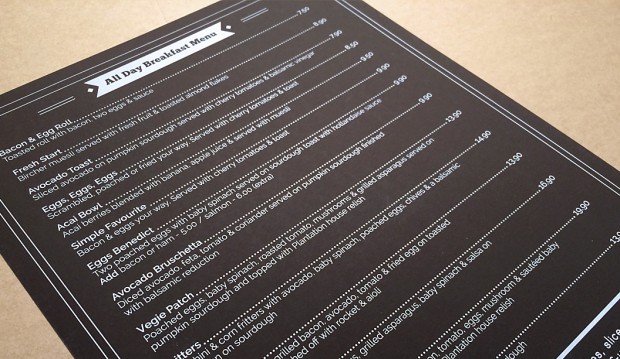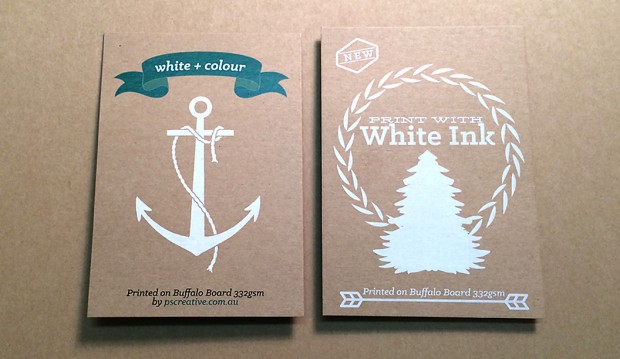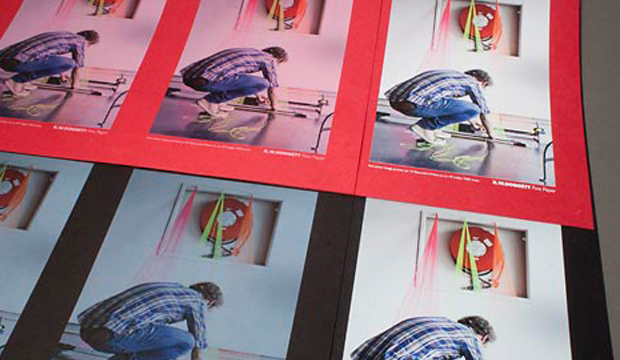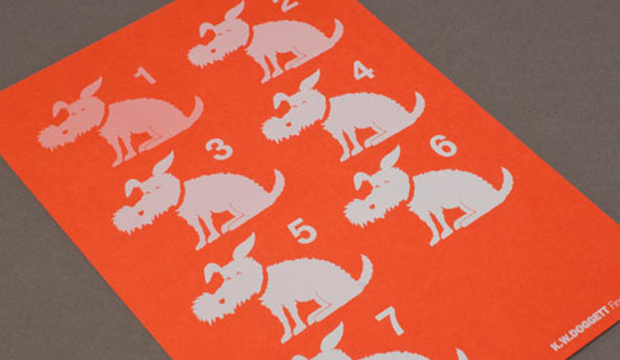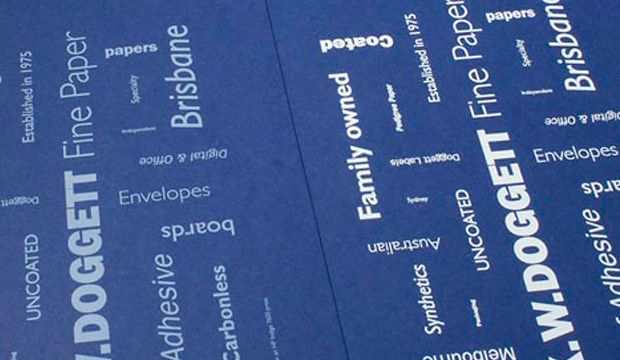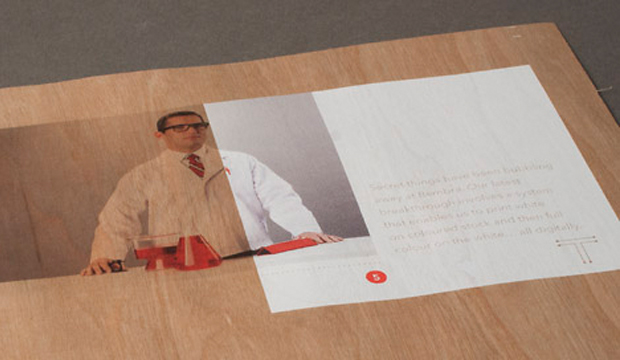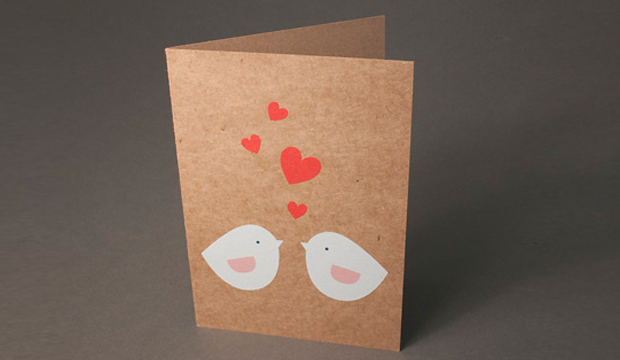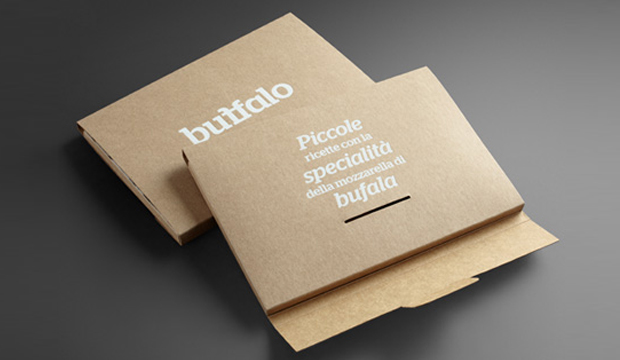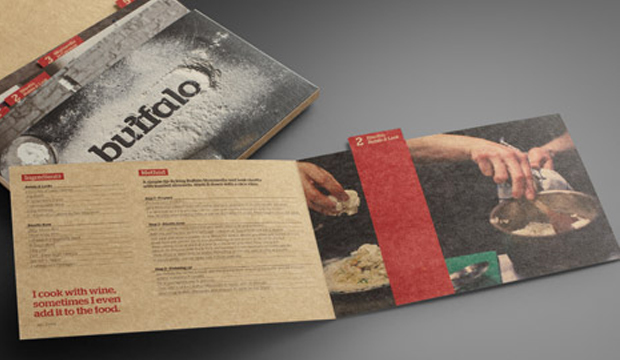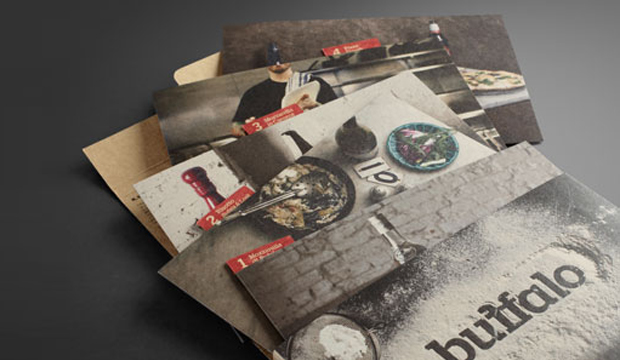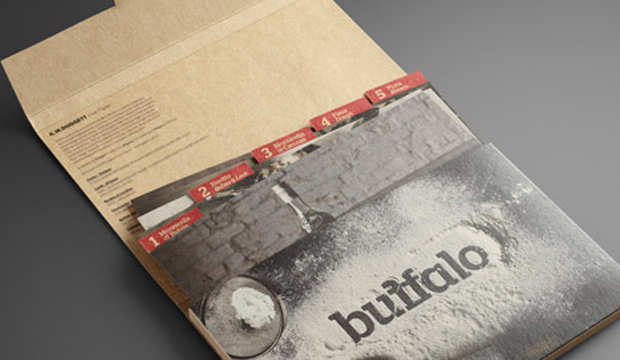Title: PS Creative white ink printed pieces
Agency: PS Creative
Stocks: Skin Curious Collection and Buffalo Board
Printing specs: Digitally printed with white ink
Printed by: PS Creative QLD
PS Creative specialises in white ink digital printing. Located in lovely Wynnum in Queensland, the boutique creative agency does lots of business cards, menus and wedding/event stationery. Their latest two jobs – a café menu and self-promotional card showcases their craft.
The menu, printed on Skin Curious Collection Mocha 270gsm was a job they got to work on after PS Creative approached the café to redesign their menu, showing them examples of what white ink can do. Daily wear and tear, some maple syrup and a car tyre (yup, one literally blew onto the road and a car ran over it)! later, these menus are still holding up. As Phil Sargeson from PS Creative explains: “The owners of the cafe wanted something completely different and long lasting, that’s when I contacted Corinne (our paper rep) to see if the Skin range would suit. The café have had really great comments on them.”
This set of images relates to their A6 self-promotional card. It’s printed full CYMK with white ink on Buffalo Board 332gsm, chosen for its natural/recycled look. Phil said to us: “I love the way the ink fuses with the board which gives the print a rustic vintage look – great for wedding invitation sets, but not just limited to that. We are now printing our own business cards on this stock and also a small handful of others to our clients.” Bring on the white ink we say! Have a read of an article we wrote on the process a couple of years ago for some hints and tips.
And if you happen to be a graphic designer, letterpress studio, agency or invitation designer, then PS Creative can offer you trade pricing. Get in contact with them by calling 0411 6333 22 or hello@pscreative.com.au

 Footy Tips
Footy Tips
